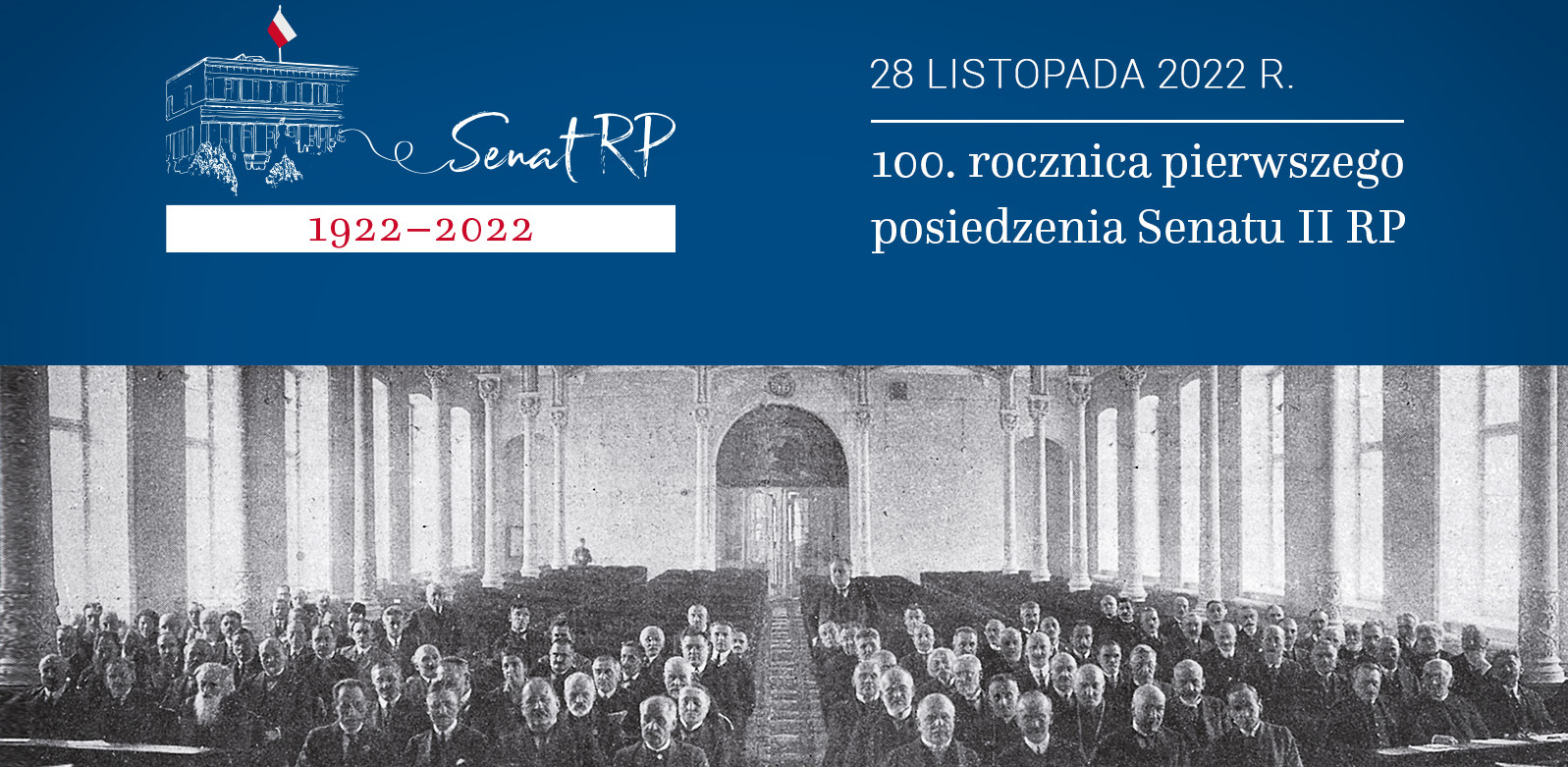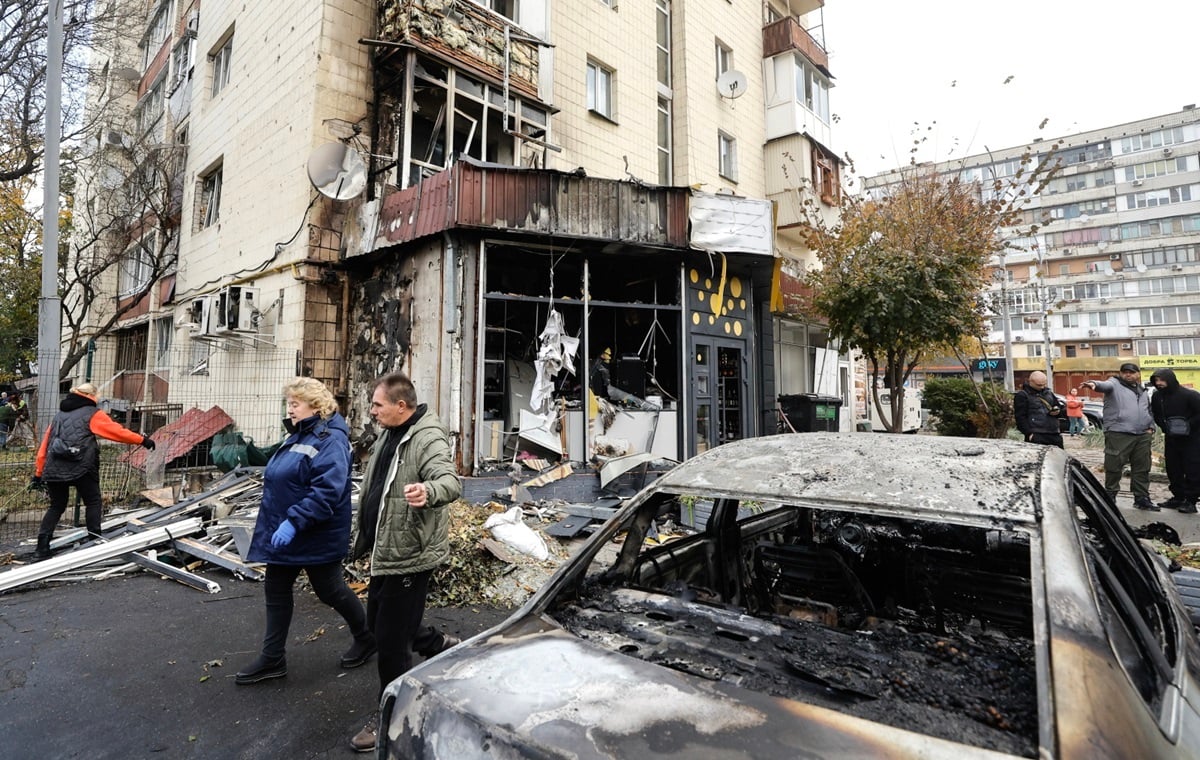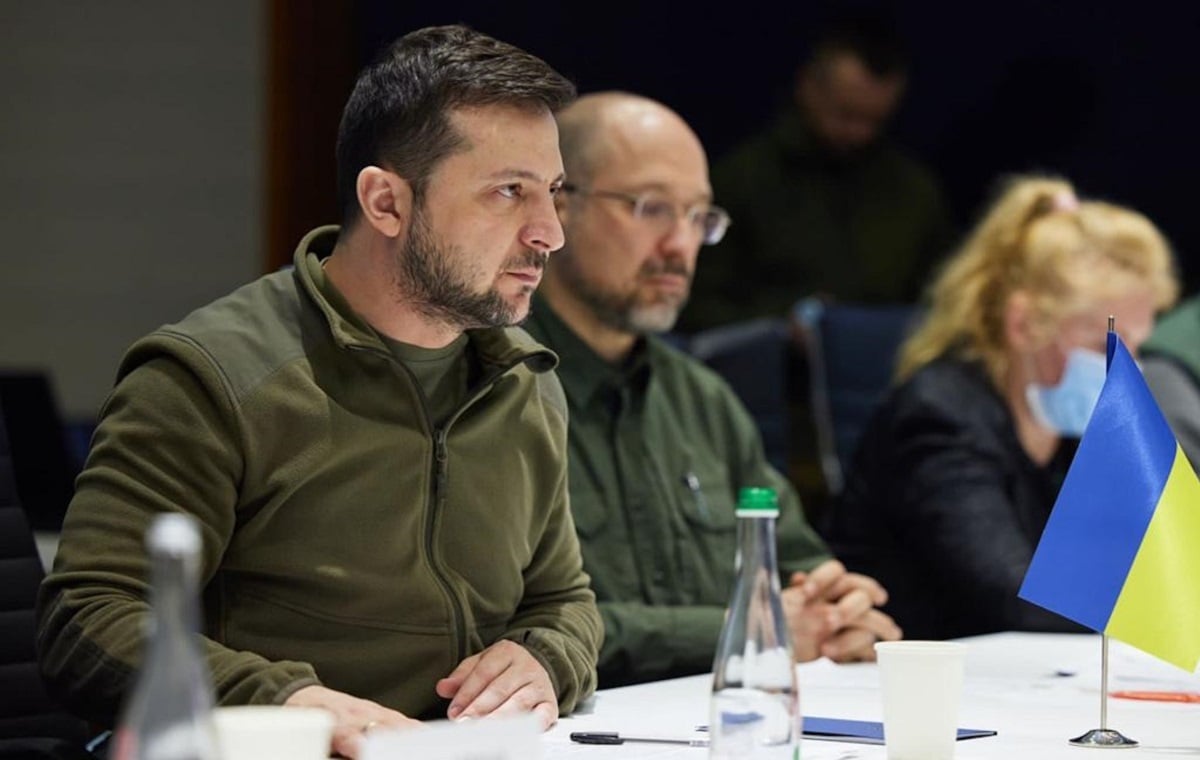100 years ago, on November 28, 1922, the first meeting of the Senate took place in the building on Wiejska Street in Warsaw. Opening the solemn meeting, Head of State Józef Piłsudski said that the upper house should be a champion of “reason, prudence and measure”.
The Legislative Sejm, elected in January 1919, very quickly began work on a future constitution. One axis of the dispute is the issue of establishing a bicameral parliament. Right-wing parties support his appointment. The left, in turn, opposed it, seeing bicameralism as an attempt to weaken the republican system. The length of future upper house terms was also considered – some drafts even stipulated a possible nine-year term for senators or (following the American system) renewal of the composition of the Senate in partial elections every two or three years.
Certain factions of the national democracy and the centre-right have also mooted the possibility of delegating representatives from local governments, universities and even the Church to the Senate – the latter option being outright rejected by the Diocese, which has resolutely relinquished direct influence on politics. . One argument of some right-wing circles is the appointment of a Judiciary in place of the Senate or, together with it, a body that controls the compliance of legal acts enacted with the constitution.
CAMPAIGN FOR SINGLE ROOMS
Left does not participate in this discussion. The Polish Socialist Party organized a campaign for a unicameral parliament, which culminated in the general strike in October 1920. The socialists only allowed the creation of the so-called Chamber of Labor, which, as the second chamber of parliament, would represent trade unions and other trade unions. A similar position was held by the peasants of the Polish People’s Party “Piast”, but their views gradually developed. In the end, their attitude resulted in a compromise. In the fall of 1920, a right-wing popular majority was formed in the Legislative Sejm, which favored creating a Senate with less powers than the Sejm and being elected in a general election. The peasants of the “Wyzwolenie” Polish People’s Party remain adamant, although there are also voices in favor of the possibility of creating a Senate – Maciej Rataj, among others, supports it.
The left sees the compromise surrounding a Senate appointment as its partial victory. The right wing, in turn, considers it important to save the old tradition of bicameral legislatures. – The principle has been saved and this principle of bicameralism is an enhanced tool for building the future Polish state – wrote the conservative columnist Stanisław “Cat” Mackiewicz.
IN THE MARCH CONSTITUTION
One of the few powers of the Senate enshrined in the March constitution is the ability to shorten the terms of both chambers at the request of the president, backed by three-fifths of the upper house. Senators also participate in the presidential election process. Together with members of the Sejm, they form the National Assembly. In day-to-day work, the powers of the Senate are limited to proposing amendments to bills adopted by the Sejm. A symbolic tribute to the role of the Senate is the custom of new heads of government to address the upper house as well. Józef Piłsudski, who in 1926 became chairman of the Council of Ministers for the first time, withdrew from this practice.
It should be added that the question of appointing the Senate was not the most important element of the constitutional debate. More time was devoted, among other things, to the issue of presidential powers. The right wing, fearing that Pilsudski would be elected to this position, limited the head of state’s powers primarily to representative functions.
ALMOST THE SAME PROVISIONS WITH THE SENATE
The electoral law adopted together with the constitution determines the composition of the Senate in 111 senators who are elected in numbers from three to nine in the voivodship districts. Citizens are entitled to active suffrage at the age of 30, and passive suffrage at the age of 40. Therefore, the provisions of the election law for the Senate are a repetition of those of the Sejm – they differ only in the provisions regarding the age of voting.
A week after the elections to the Sejm which were held on 12 November 1922, elections to the Senate were held. Of the 9.1 million eligible voters, 5.9 million, or 61.5 percent, voted. The right wing won the most seats in the upper house – 36.1 percent: the People’s National Union won 26.1 percent, and the Christian National Club – 10 percent. The center won 24.4 percent. seats (Christian Democrats – 6.3 percent, Polish People’s Party “Piast” – 15.3 percent and National Labor Party – 2.8 percent). The Left received 13.4 percent, including the Polish Socialist Party – 6.2 percent. The national minority in the Senate election improved their results compared to the Sejm election, gaining 24.3 percent of the vote. seat.
JÓZEF PIŁSUDSKI: WORK AND PERSEVERANCE INFLUENCE HISTORY
The first session of the Senate of the Second Polish Republic was opened on 28 November 1922 at 16:30 by the outgoing Head of State, Józef Piłsudski, who recalled the institution’s long tradition in the former Republic of Poland.
– Work and perseverance influenced the fate of the country – he said, reminding that the constitution adopted in March 1921 did not give the Senate such an important role as it played in the days of the former Polish-Lithuanian Commonwealth.
“In accordance with the spirit of the constitutions of modern democracies, I order you to be a spokesperson who is reasonable, prudent and measured in fulfilling the duties entrusted to the highest state authorities,” he stressed. He added that this task is very important in conditions of very acute political conflict. Ultimately, he expected senators to strike a “necessary balance of intentions, ends and means”.
THE OLDEST SENATOR APPEARS
Then Piłsudski left the running of the debate to the oldest senator. It was 87-year-old Bolesław Limanowski, a legendary activist on the independence left. Piłsudski described him as “one of the oldest freedom fighters”. In a lengthy speech, the senior marshal recalled his childhood under the shadow of tsarist terror after the fall of the November Uprising, the struggle of the January rebels and the three decades of independence struggle remaining to rebuild Poland.
– Today I am sitting in the Senate and I am opening its first session, thanks to the fact that our hottest wish has come true: we have national and political independence, we have a democratic Republic – said the elderly politician, who then telephoned his younger colleagues to cooperate for the Republic of Poland. On December 1, Wojciech Trąmpczyński, supported by the right wing, was elected Marshal of the Senate, until recently Marshal of the Legislative Sejm and longtime national activist in Wielkopolska.
The Senate functioned in the form prescribed by the March Constitution until 1935. In the April constitution, all organs of state were subordinate to the president. Symbolic of the change is the practice of submitting requests by the Marshal-elect of the Senate to the President of the Republic of Poland for permission to perform these functions. At the same time, the constitution gave the Senate new powers regarding, among other things, motions of no confidence in the government or individual ministers. The Senate is made up of senators, one-third appointed by the president and two-thirds through two-stage elections. The number of senators was reduced from 111 to 96. Passive suffrage was granted to citizens over 40 years of age. The right to be elected to the Senate is granted only to persons who are deserving because of their education, occupied state positions or possession of state orders and awards. The term of the Senate is five years.
LAST SAT
For the last time in the history of the Second Polish Republic, the Senate convened on 2 September 1939. Two months later, it was dissolved along with the Sejm by President Władysław Raczkiewicz. New elections for both chambers will be held 60 days after the end of the peace. In fact, it never happened – the puppet Polish People’s authority established by the Soviets abolished the institution of the Senate after a fraudulent referendum in 1946. In fact, the majority of voters supported his behavior – it was one of expressions of opposition to the regime.
The Senate was reborn thanks to an agreement between the authorities and part of the opposition, which was concluded during talks on Magdalenka and at the round table in 1988-1989. In April 1989, the General Assembly of the People’s Republic of Poland amended the constitution, which created the 100-member Senate of the People’s Republic of Poland. Elections to a completely free Senate during the first term ended in a complete defeat for the communists and their allies, who did not win a single seat. The revived Senate convened for the first time on July 4, 1989. Until December 1990, it was the only state institution with a fully democratic character.
On the occasion of the anniversary, a ceremony will be held with the participation of President Andrzej Duda, Chairman of the Sejm Elżbieta Witek and other representatives of state authorities. At around 12:50 pm, flowers will be placed in front of a plaque commemorating the murdered, fallen, missing, and those who died during World War II and the postwar period of repression by senators of the Second Polish Republic. A little later – in a ceremonial session of the Senate at 13.00 – the anniversary resolution will be adopted, and a presidential address is also planned. The celebrations will conclude with a performance of “The Word is Fire” and a gala at the Polish Theater in Warsaw.
PAP, IAR/MarWer

“Reader. Future teen idol. Falls down a lot. Amateur communicator. Incurable student.”


![Bogusław Wołoszański: “Achieving nuclear weapons would be the beginning of World War III” [WYWIAD]](https://storage.googleapis.com/bieszczady/rzeszow24/articles/image/877236c0-66fd-457a-9eb4-41792f9077ff)




